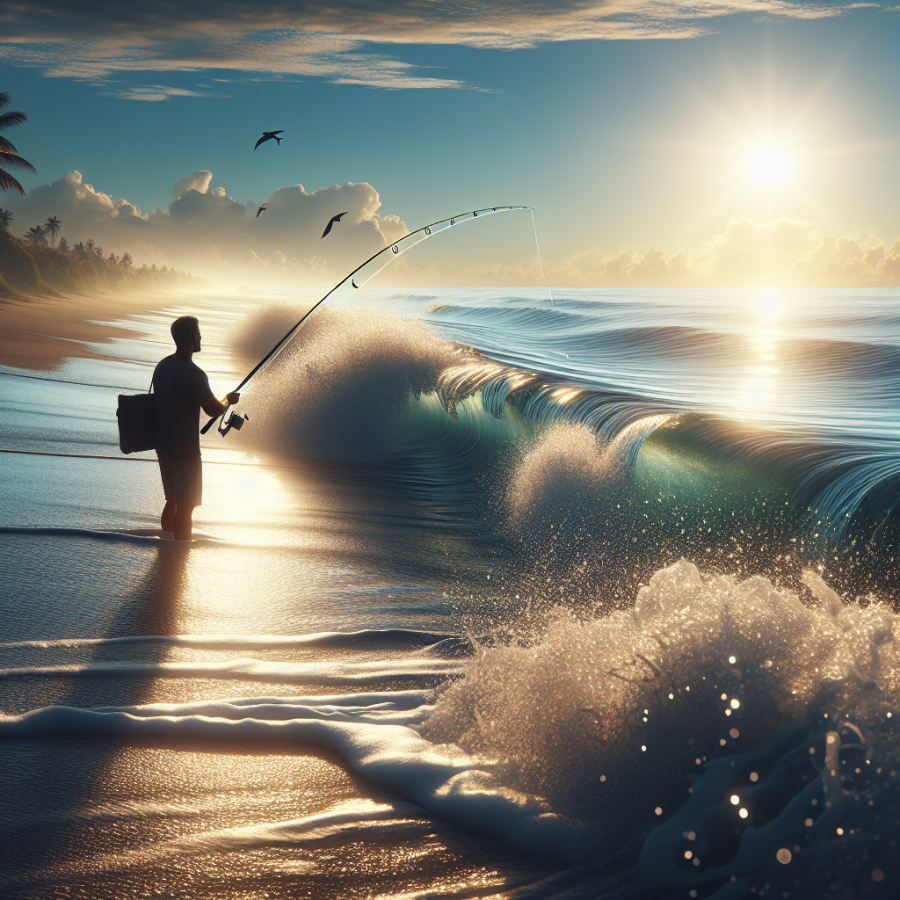Enhancing Your Shoreline Fishing Success: Bait Selection, Reading the Water, and Safety Tips
Certainly! Let’s dive into the details of enhancing your shoreline fishing success, focusing on three crucial areas: bait selection, reading the water, and safety tips.
**Bait Selection**
Knowing which bait to use is critical to shore fishing success. Natural baits like worms, shrimp, clams, and small fish often attract a wide range of species because they are part of the natural diet of many fish. When selecting bait, consider the target species and what they typically feed on. Freshwater anglers might opt for live bait such as nightcrawlers or minnows, while saltwater anglers could do well with squid or cut bait. Artificial baits like spoons, jigs, and soft plastics can be equally effective, especially when they mimic the movement and appearance of local prey. It’s also important to match the size of your bait to the fish you’re targeting – smaller baits for small fish and larger offerings for bigger prey. Observing what seasoned anglers are using and consulting with local bait shops can greatly inform your choice.
**Reading the Water**
The ability to 'read' the water is an invaluable skill in shoreline fishing. This means observing the subtle cues in the environment to identify promising fishing spots. Look for structures such as jetties, rocks, and logs, which can be natural gathering places for fish. Also, be on the lookout for changes in water color that might indicate drop-offs or varying bottom types where fish might congregate. Ripples or water movement can suggest the presence of fish or even reveal the direction of currents and potential channels. Birds diving into the water might indicate baitfish below, which could attract larger predatory fish. Pay attention to the tides as well, especially in saltwater, as some fish species feed more actively during high or outgoing tides.
**Safety Tips**
Safety should always be a top priority when fishing from the shoreline. The first rule is to always let someone know where you’re going and when you expect to return. Wear appropriate clothing for the weather and water-resistant footwear with a good grip to handle wet rocks or slippery surfaces. Always keep an eye on the water; waves can suddenly intensify, which can be hazardous, especially in surf conditions. Be aware of local wildlife and steer clear of vegetation and areas that may be home to snakes or other dangerous animals. Bring a well-stocked first-aid kit and know basic first aid procedures in case of an emergency.
Read also:
Saddle Up for Excitement: The Thrilling World of Rodeo
Mastering the Basics of Surf Casting: Gear, Techniques, and Timing
To become proficient at surf casting, it's essential to master the basics. This involves understanding the right gear, perfecting your casting techniques, and knowing the prime times for fishing. These three elements are the cornerstone of successful shoreline fishing, and we'll dive into each to help you level up from a beginner to an avid surf fisher.
**Gear:**
The right equipment is critical for effective surf casting. Start with a sturdy, long fishing rod, typically between 9 to 12 feet, to allow you to cast further out where the bigger fish tend to be. This length also gives better leverage to fight the waves and wind. Your reel should be saltwater-resistant to prevent corrosion – a common issue due to the harsh marine environment. High-capacity reels are preferred as they can hold more line which is useful for long-distance casting.
When selecting fishing line, consider braided lines for their strength and ability to handle heavy fish. Monofilament lines can be easier for beginners due to their stretchiness and forgiveness with abrupt tugs. Also, invest in a variety of sinkers, as they will help you manage the undertow and keep your bait in the strike zone.
For bait and lures, local knowledge will be your best guide. Visit nearby tackle shops and talk to experienced anglers to learn what's working. Live bait such as sand crabs, worms, or small baitfish are effective, while artificial lures that mimic local prey can also yield good results.
**Techniques:**
The essence of surf casting is in the cast itself. Practice the overhand cast, sidearm cast, and underhand cast to be versatile in various conditions. The overhand cast allows you to send the bait furthest, while the sidearm and underhand offer more control and can be used under windy conditions or when space is limited.
Developing a consistent casting routine is as important as the cast. Check your surroundings to avoid accidents, and ensure your footing is stable on the wet, shifting sands. Start with small casts and gradually build up to longer distances as your technique improves.
Also, learn to read the surf. Look for rips, troughs, and sandbars – these are the places game fish are likely to hunt for their prey. Casting into these areas increases your chance of a catch.
**Timing:**
The timing of your surf fishing excursions can make the difference between an okay and a spectacular catch.




